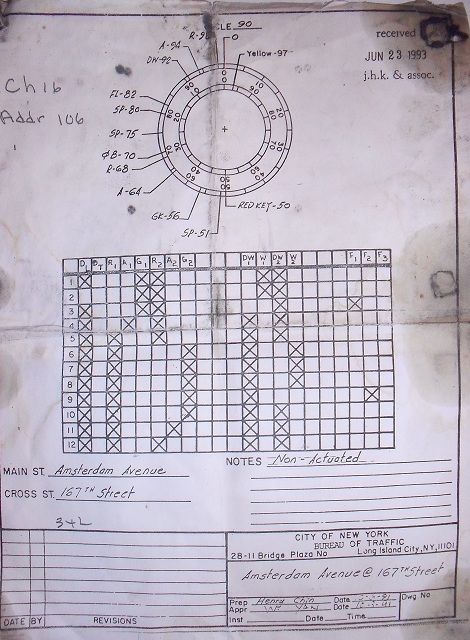mcha9797 wrote:The first two circuits are used for syncronization and ??? and are not available, so that will leave me with 14 circuits available. The picture that you referred to, is the way that I received the controller.
Normally, the first cam and circuit next to the solenoid keeps the entire signal controller in synchronization. The next cam after the first one is unused, however, I am fairly positive that its purpose, if used, is to transfer the main power from one dial timer to another.
mcha9797 wrote:How is your E/M controller set up??
I own two Marbelite E/M signal controllers, and I own one G.T.E. E/M signal controller. Each one is, in general, very similiar to each other, since they share similiar features and what not. That said, their parts are interchangeable. This is true for some in particular from both companies.
Each one has 21 circuits. Out of those 21, 19 are used for signals. The first two cams are what I mentioned above. Most electro-mechanical signal controllers, if not all, generally use this set-up. Aside from them, Main and Cross Streets circuits are present. The third phase comes afterward. Then, the pedestrian signals for both phases 1 and 2. The "S" phase comes next (S1, S2, and S3). In the Marbelite and G.T.E. E/M signal controllers, the "S" phase has three circuits, and this particular section in the cam assembly could be used for an additional phase, or an additional signal head. What Joe mentioned in his comment that was in regards to how phase 1 could be split into individual directions if a protected left turn movement is used in one direction is one way to use those circuits. Finally, FL1, FL2, and FL3 are used for the flashing "DONT WALK" clearences. Each one corresponds to a phase. The third slot was not commonly used in the New York City signal controllers. It was typically used if such a set-up that Joe mentioned was present at a signalized intersection.
The set-up I have is very similiar to what you have. Most are generally the same.
Steven G.




